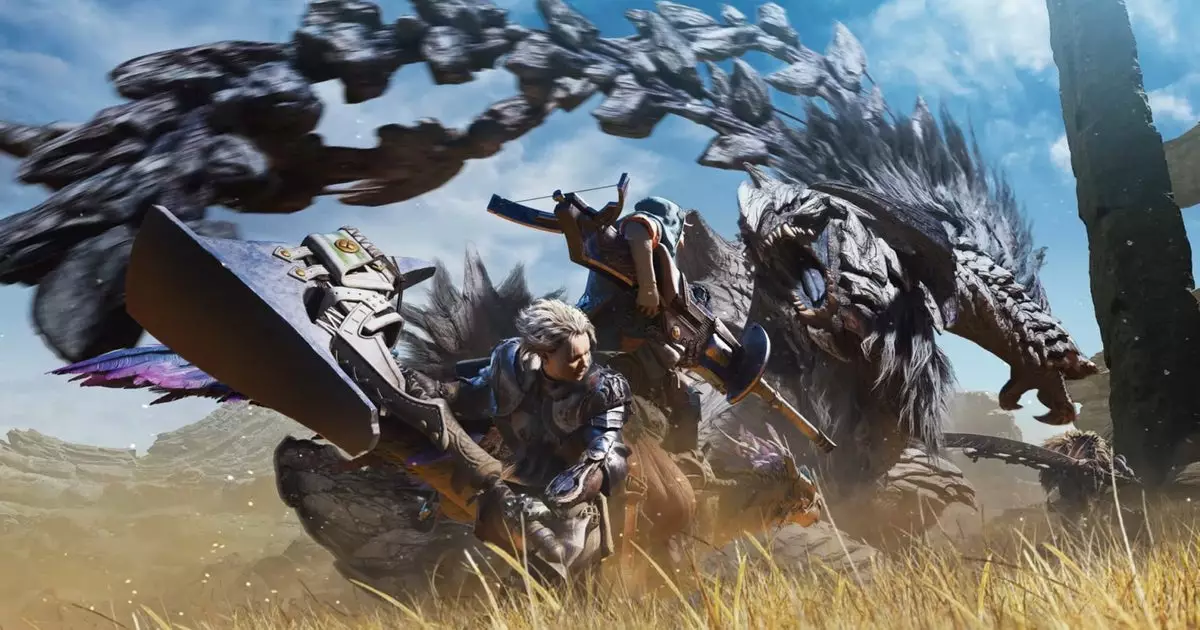The “Monster Hunter” series, known for its immersive gameplay and intricate mechanics, continually intrigues its fan base with each installment. The latest addition, “Monster Hunter Wilds,” introduces a range of charming new creatures and materials, yet its handling of the weapon system leaves something to be desired. While the game aims to enhance the player experience, it faces challenges in maintaining originality and excitement in its weapon lineup, a crucial element of the gameplay.
Capcom has undoubtedly succeeded in creating an expansive and diverse world filled with new wyverns, arachnids, and other monstrous creatures. However, as players dive into combat, the freshness of these additions can feel diluted. The weapon types, though aesthetically pleasing and boasting expanded move sets, often reflect what veterans may recall from earlier titles such as “Monster Hunter Freedom 2” on the PSP. Despite some advancement, the core essence of the armaments seems locked in nostalgia rather than innovation.
Director Yuya Tokuda shared insights during a recent interview, explaining the developers’ strategic choice to enhance and balance the existing weapon repertoire rather than introduce new types. This speaks to a broader issue within the franchise: while nostalgia plays a significant role in retaining loyal fans, it shouldn’t come at the cost of stifling creativity in weapon design. The decision to postpone the introduction of an additional weapon type—believed to be a complex task that requires extensive resources—leads to questions about the long-term vision for the series.
An Arsenal of Familiarity
The current roster boasts 14 weapon categories, from the straightforward Greatsword to the more intricate Hunting Horn, often humorously dubbed the “Magic Murder Trumpet.” However, the challenge of presenting a 15th weapon that could coexist harmoniously with existing types is a testament to Capcom’s cautious approach. While it’s understandable to endeavor for balance and depth among available weapons, one must wonder: does this prioritization risk leaving players yearning for new mechanics and strategies?
Moreover, the challenge presented by the transition from earlier titles, such as “Monster Hunter: World” and its Iceborne expansion, highlights Capcom’s struggle to cater to seasoned players while also accommodating newcomers. The game assumes players are versed in the mechanics rather than rebuilding from foundational aspects. This sentiment may alienate those new to the franchise or even deter seasoned veterans who thrive on the thrill of evolving gameplay.
Balancing the arsenal entails a demanding process of tweaking and innovating among weapon types, and Tokuda’s comment about shifting resources toward this balance is crucial. Every Monster Hunter weapon is intricately designed, drawing inspiration from the game’s various breathtaking monsters. This unique approach to weapon design offers an opportunity for boundless creativity—imagine a weapon inspired by a monstrous wyvern made entirely of hydrophobic materials or a triangular insectoid creature. These ideas could expand both the lore and gameplay mechanics, emphasizing the potential for imaginative weaponry that complements the series’ ethos.
However, it is essential to recognize that crafting new weapons should not simply be an episodic marketing strategy, but rather a sincere effort to elevate the player experience. Capcom may benefit from segmenting its design teams for creatures and weaponry, allowing for groundbreaking and unconventional creations that invigorate the gaming experience.
Ultimately, the challenge before Capcom goes beyond just weapon types; it encompasses the dedication to nurturing creativity within the confines of an already expansive series. While the premise of addressing balance in an established lineup holds merit, it should not act as a hindrance to innovation. “Monster Hunter Wilds” has all the elements necessary for a thrilling experience, but it must ensure that weapon diversity remains as engaging as the monstrous foes that players strive to vanquish.
The series has come a long way, and as it continues to evolve, embracing imaginative design alongside balancing mechanics may forge a path that rekindles excitement and passion within its dedicated fanbase. By doing so, Capcom can ensure that both the thrill of the hunt and the joy of using unique and diverse weapons remain at the forefront of its game development ethos.


Leave a Reply